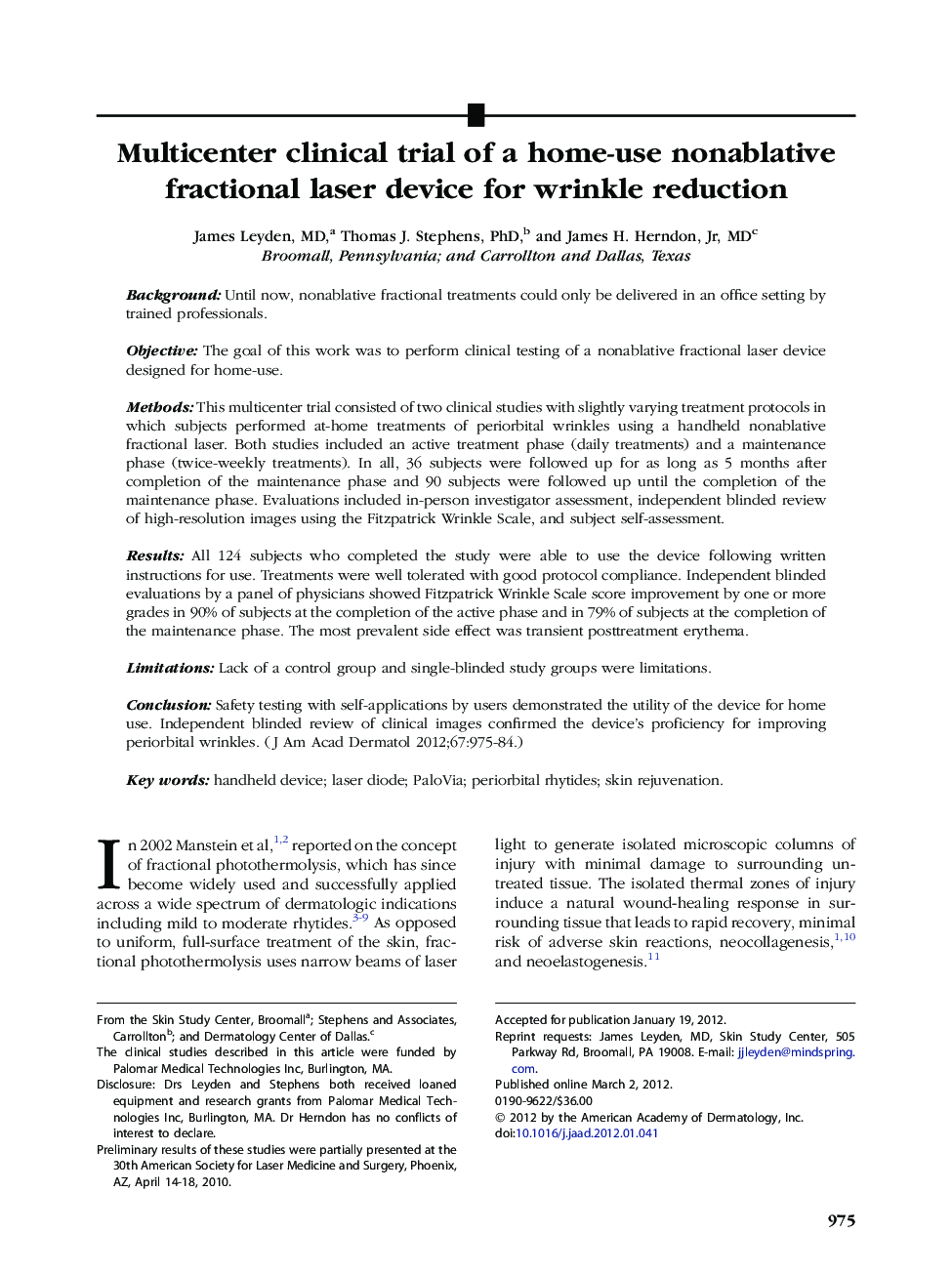| Article ID | Journal | Published Year | Pages | File Type |
|---|---|---|---|---|
| 3205930 | Journal of the American Academy of Dermatology | 2012 | 10 Pages |
BackgroundUntil now, nonablative fractional treatments could only be delivered in an office setting by trained professionals.ObjectiveThe goal of this work was to perform clinical testing of a nonablative fractional laser device designed for home-use.MethodsThis multicenter trial consisted of two clinical studies with slightly varying treatment protocols in which subjects performed at-home treatments of periorbital wrinkles using a handheld nonablative fractional laser. Both studies included an active treatment phase (daily treatments) and a maintenance phase (twice-weekly treatments). In all, 36 subjects were followed up for as long as 5 months after completion of the maintenance phase and 90 subjects were followed up until the completion of the maintenance phase. Evaluations included in-person investigator assessment, independent blinded review of high-resolution images using the Fitzpatrick Wrinkle Scale, and subject self-assessment.ResultsAll 124 subjects who completed the study were able to use the device following written instructions for use. Treatments were well tolerated with good protocol compliance. Independent blinded evaluations by a panel of physicians showed Fitzpatrick Wrinkle Scale score improvement by one or more grades in 90% of subjects at the completion of the active phase and in 79% of subjects at the completion of the maintenance phase. The most prevalent side effect was transient posttreatment erythema.LimitationsLack of a control group and single-blinded study groups were limitations.ConclusionSafety testing with self-applications by users demonstrated the utility of the device for home use. Independent blinded review of clinical images confirmed the device’s proficiency for improving periorbital wrinkles.
